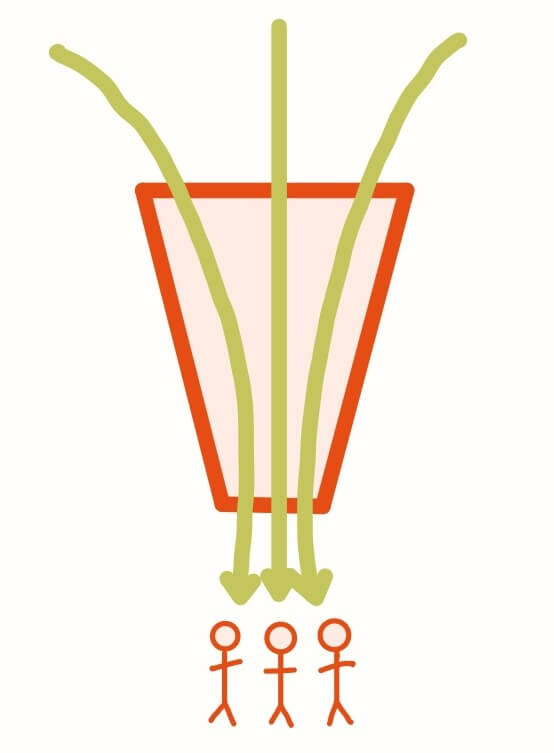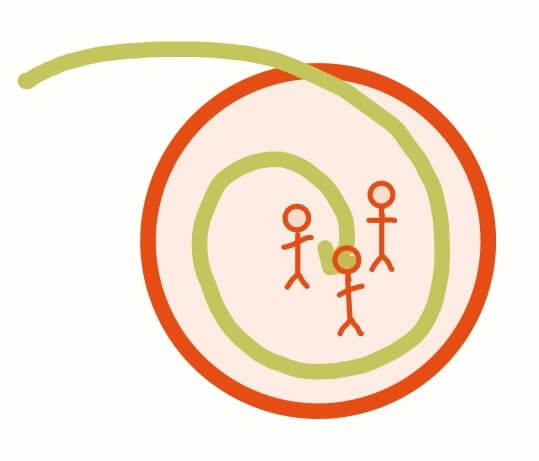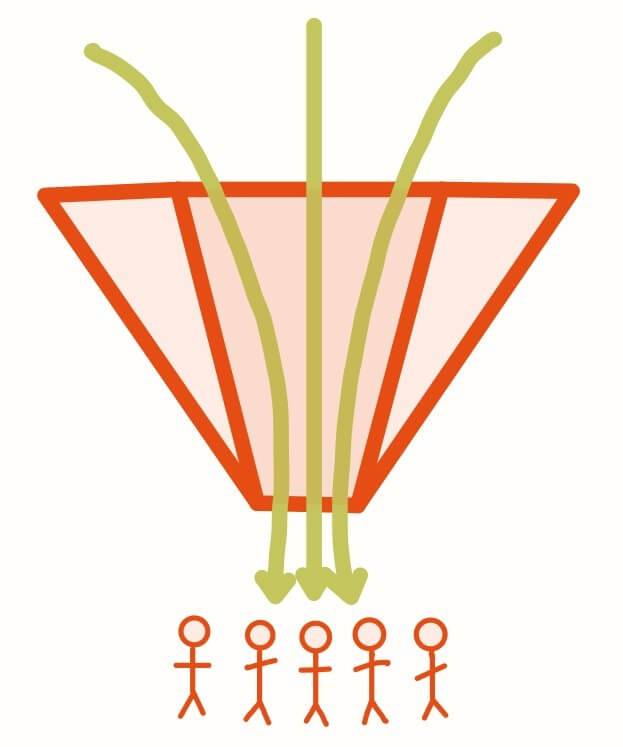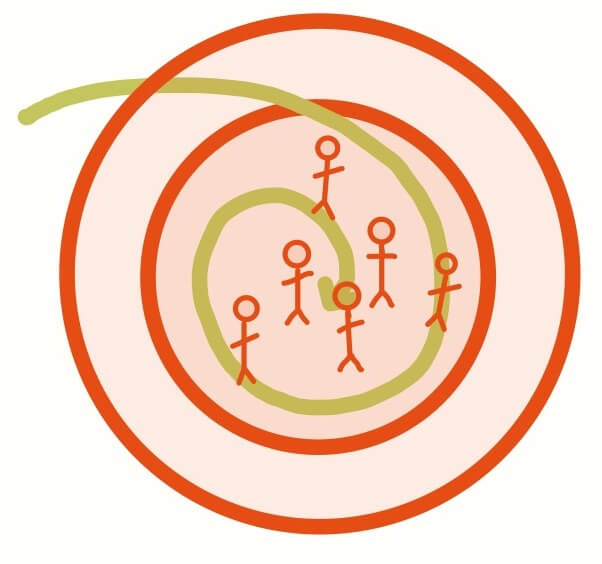This is installment 2 in my series about Brand Worlds. In the first installment I answered the question, “what is a brand world?” and introduced the concept of worldbuilding in a business context.
You can read that post here.
In this installment we are going to chat about funnels vs brand worlds, talk about what makes them so different, and why I am partial to a worldbuilding approach.
Let’s start by talking about funnels.
The marketing funnel we’re all familiar with has been, until recently, the most predictable and efficient way to make sales on the internet. It has been the gold standard of online marketing.
Pretty much anyone could make big bucks by quickly amassing thousands of followers or running paid ads to cold leads, point those followers/leads toward an attractive freebie offer or webinar, then funnel those who opt-in through a linear sequence that lumps on upsell after upsell.
Follow it up with an email sequence peppered with countdown timers, high-pressure scarcity tactics, and plenty of FOMO, and you have (what used to be) a high-converting marketing funnel.
I say “used to be” because, since around mid-2023, a ton of businesses have seen their previously thriving funnels start to lose traction.
Audiences are clicking away, conversions are lower, webinars aren’t being watched, and even a whiff of urgency or scarcity makes most people immediately exit the funnel.
So why the shift?
Well, to put it simply, audiences are tired and buying behavior is changing. Over the last couple of years (particularly in the post-Covid era), the online business space has exploded.
There are literally millions of people trying to grow a business online, and most of them have learned their marketing strategy from the famous names who hit it big with funnels over the last decade.
What this means is that people are inundated with funnel tactics everywhere they look. They are constantly being marketed to with freebies, webinars, and click-bait-y headlines that all lead to an upsell or a pitch.
People have become wary of anything claiming to offer free value, because they’ve been burned too many times by a bait-and-switch offer that only existed to get them to buy something else.
So, it’s not that funnels themselves are the issue. Funnels are simply a tool to be used and they can still work really well for the right people.
But the truth is that the market is skeptical and tired of tactics that are associated with a funnel.
With funnels, sales and customers are seen as the product of our marketing, which makes it all too easy to start viewing people as a commodity. Consumers have begun to feel like nothing more than a number and are craving marketing that feels more human & relational.
Here is how funnels work. As you can see, people are the product/output:

This is what makes worldbuilding so effective. The primary goal of worldbuilding is to create relationships with people, not to generate transactions from them.
We seek to create genuine relationships with people and serve them as best we can even before they become a paying customer of our business.
So we simply focus on keeping as many people in our world as happy, engaged, and involved as we can. We no longer do business in a way that treats people as a number. We aren’t creating a funnel and trying to see how much output we can get.
And when we make this shift, people become the center of our business and marketing, rather than an output of it:

To sum it up in a nice little phrase, people become the purpose of our marketing, not the product of it. So with worldbuilding, marketing feels exciting and empathetic for us as the business owner and for the people we market to.
Another key difference between funnels vs brand worlds is how we approach growth and expansion.
With the funnel, success is measured by output, which means the more output (sales/opt-ins) your funnel produces, the more successful it’s considered.
To increase the output of our funnel, all we have to do is make the mouth wider and have more input. More input = more output.
So with the funnel, growth and expansion simply means pouring more people through the mouth of the funnel and seeing who comes out the other side:

It’s relatively predictable, BUT this approach heavily relies on volume. And in 2024, volume is expensive and time consuming. Social media is crowded, ads are expensive, and finding leads who are open to purchasing quickly from someone they’ve never heard of is hard.
With funnels, there isn’t much emphasis on where people go after they’ve been through the funnel. They just stay on an email list where they will potentially get sent down a new funnel.
So widening the mouth of the funnel doesn’t actually do much for our customer lifetime value, nor does it create an environment that cultivates longterm retention.
With world building, since our goal is to form genuine, long term relationships with the people in our audience and keep them sticking around, it requires less volume. The only way we can expand our world is not by pouring more people through a funnel — we expand our world by bringing in more people who want to stay.

Those people, when they decide to stay in our brand world and continue to engage with & be served by us, will often become loyal advocates of our brand and eventually begin bringing new people in to become part of our world.
Our goal is to create relationships with these people rather than to generate transactions from them. (This is what I call “Cozy Marketing”). This means success is measured by how well we retain loyal fans of our brand inside our world, rather than on the “output” we are producing.
Keeping people around in our world and making sure they are happy, involved, and engaged is what we aim for.
In fact, a Harvard Business Review study found that increasing customer retention by just 5% can increase profits by up to 95% — that means you could double your profits by simply focusing on the PEOPLE you serve and making them want to stick around in your world, rather than trying to brainstorm how to get them to buy ASAP.
When we build a brand world rather than a funnel, we open up space for real relationships to form. We create an environment where people actually want to stick around and engage with our content, rather than feeling like they’re being herded toward a sale.
The traditional funnel approach assumes that everyone needs the same content, in the same order, to make a buying decision. But we all know that’s not how real relationships work. Real relationships are built on trust, genuine connection, and the freedom to engage in a way that feels natural.
Most of all, relationships have a natural ebb and flow, and they require authentic interest from the parties involved to be sustained over time.
This brings up an important question that I hear from a lot of business owners who are being introduced to brand worldbuilding for the first time:
How do we ensure that we are creating an environment within our brand world that leads to strong relationships and makes people feel happy and excited to stick around?
That’s exactly what we’re going to talk about in the next installment of this series, where we’ll cover something I call the non-linear buying journey.
Continue to installment three – The non-linear customer journey of a brand world
Addy Lopes
The girl behind Encontro
Hey, I'm Addy! And I believe that marketing becomes enjoyable for everyone when brands put people first.
After 5 years of running my business, I realized I had let a lot of stale information clutter my brain and hold me back. I wanted to move on from the marketing status quo.
I decided to reimagine the way I market & grow my business. I ditched the constant opt-in freebies, launches based around urgency, and shouting into a void on social media. Cozy marketing was born.
There are no silver bullets in entrepreneurship, but by creating a brand you (and your audience) can’t wait to show up for, you dramatically increase your chances of success.
Let me teach you how to build a world that invites people in & makes them feel at home. Your journey begins with my Build Your Brand World mini course, linked here.
